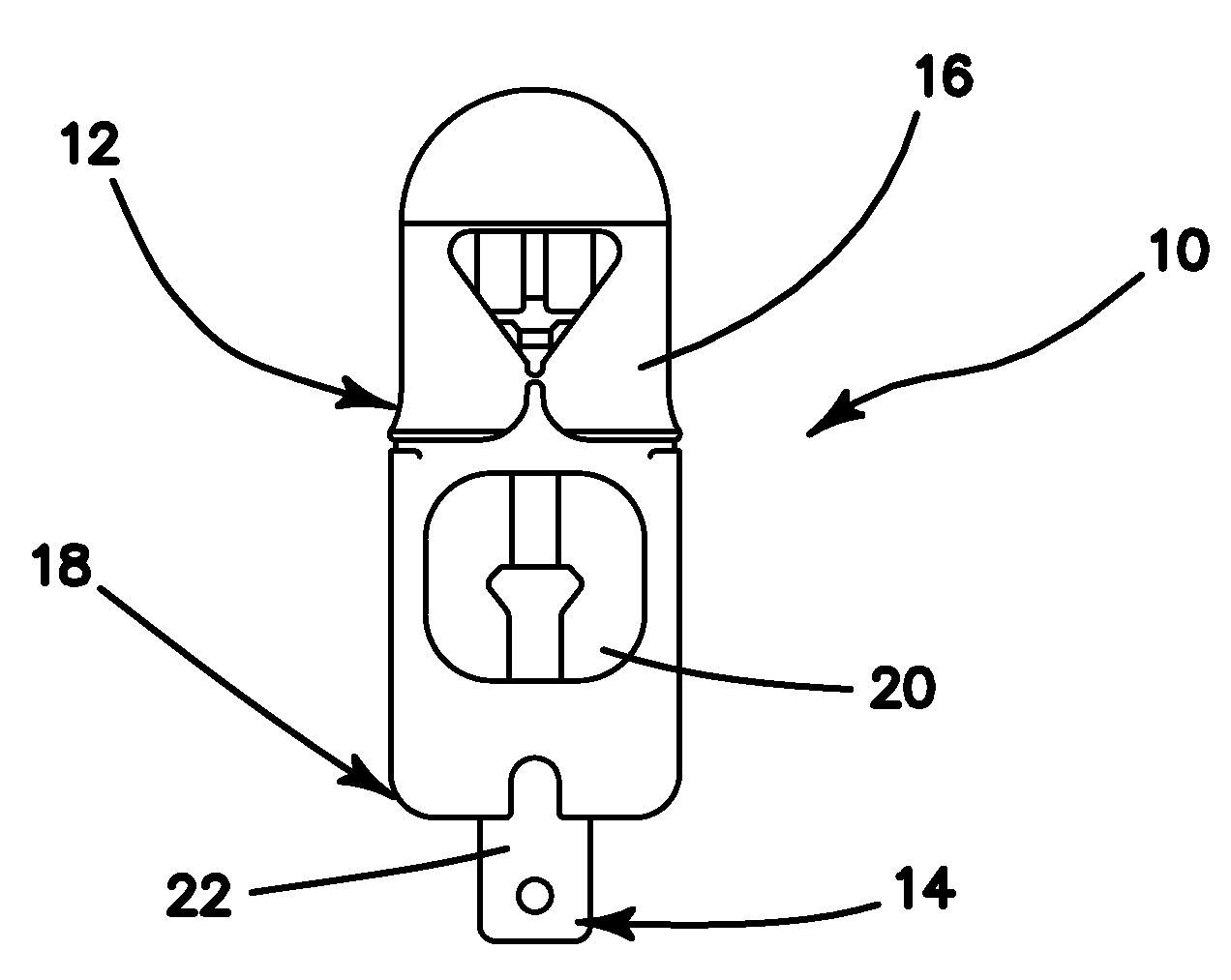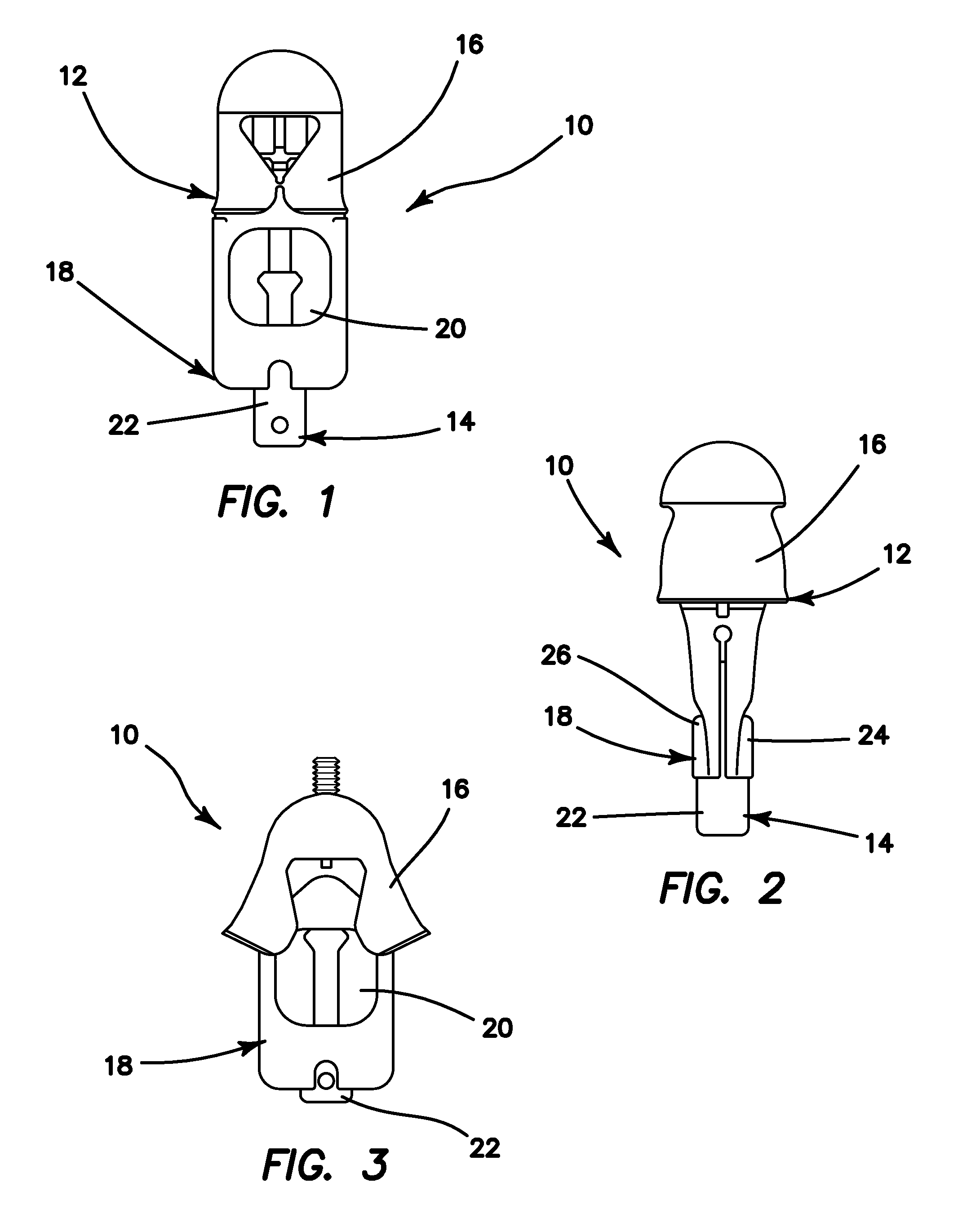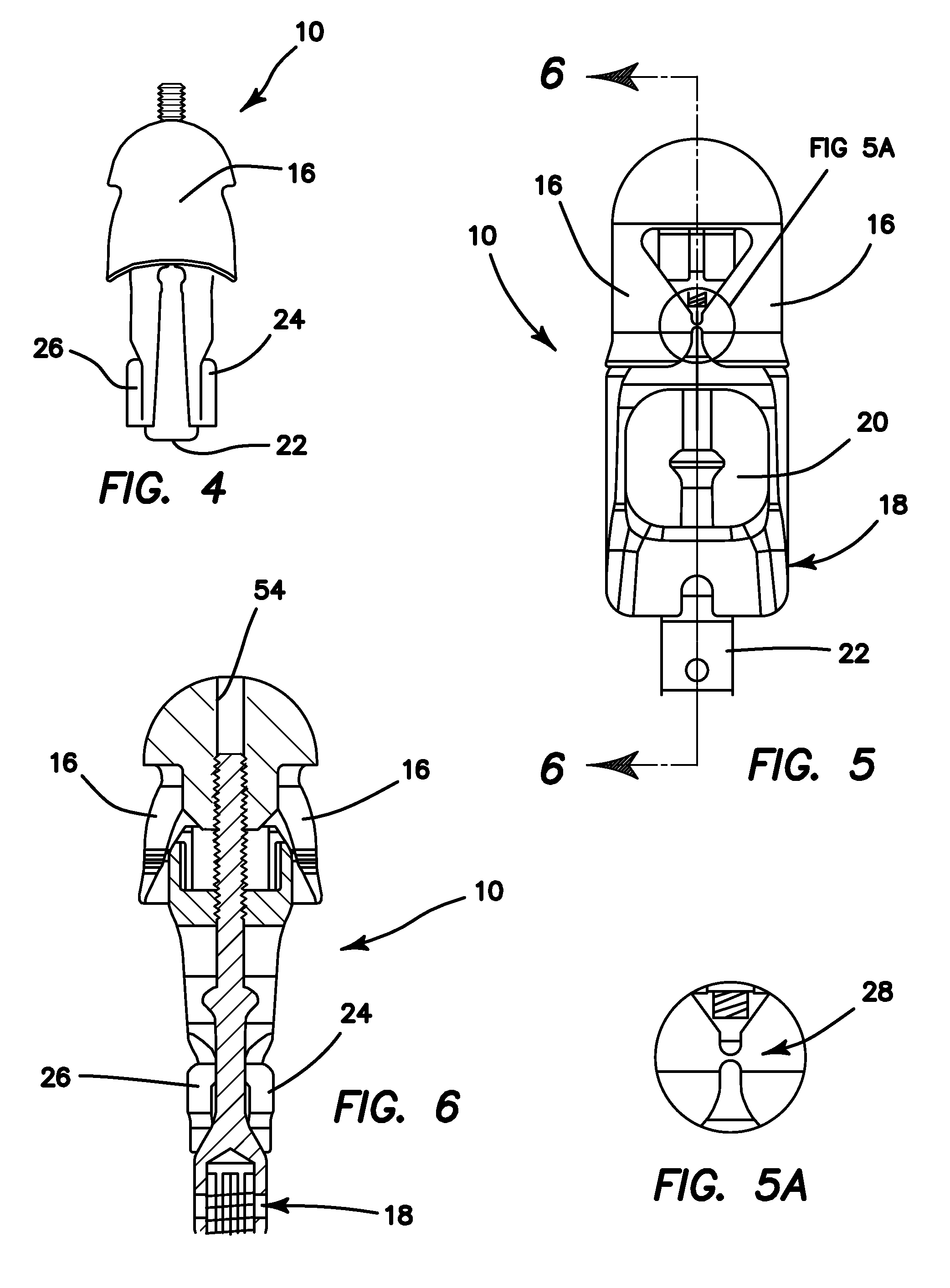Methods and systems for material fixation
a technology of material fixation and system, applied in the field of tendontobone fixation system, can solve the problems of increasing the rate of anterior knee pain, invasive harvesting procedure of btb autograft, and tendons which are torn from their insertion site into bone, etc., and achieves the effect of improving the tendon-bone fixation of hamstring autografts, high fixation of tendon-bone, and convenient us
- Summary
- Abstract
- Description
- Claims
- Application Information
AI Technical Summary
Benefits of technology
Problems solved by technology
Method used
Image
Examples
Embodiment Construction
[0051]Referring now more particularly to the drawings, an implant 10 constructed in accordance with the principles of the present invention, having a body 12 comprising three separate major components. These components comprise a quad lead screw 14, wings 16, and a body wedge 18. Tendon eyelets 20 are provided for the loading of tendons thereinto prior to insertion of the implant 10 into a bone tunnel. When the implant 10 is placed into a bone tunnel, the screw 14 is rotated clockwise until a head 22 of the screw 14 slides between portions 24, 26 of the body wedge 18. This expands the base of the implant by forcing the wedge portions 24, 26 outwardly, thereby acting to compress the tendon against the bone tunnel walls. As the screw 14 continues to rotate, the wings 16 slide apart over the body wedge 18 and engage with the walls of the bone tunnel to anchor the implant 10 in place within the tunnel. The engagement of the wings 16 into the bone is what gives the implant the majority o...
PUM
 Login to View More
Login to View More Abstract
Description
Claims
Application Information
 Login to View More
Login to View More - R&D
- Intellectual Property
- Life Sciences
- Materials
- Tech Scout
- Unparalleled Data Quality
- Higher Quality Content
- 60% Fewer Hallucinations
Browse by: Latest US Patents, China's latest patents, Technical Efficacy Thesaurus, Application Domain, Technology Topic, Popular Technical Reports.
© 2025 PatSnap. All rights reserved.Legal|Privacy policy|Modern Slavery Act Transparency Statement|Sitemap|About US| Contact US: help@patsnap.com



